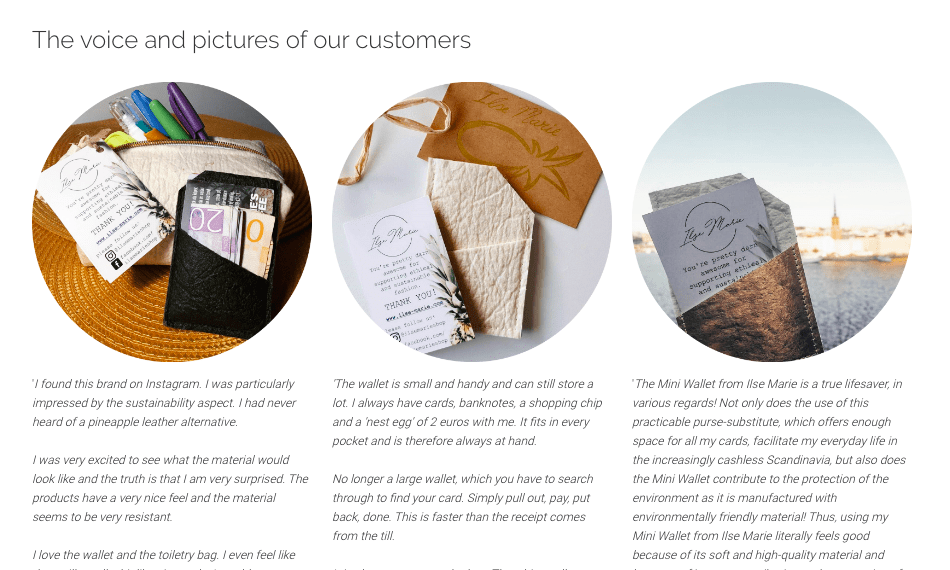Ecommerce returns cost money, take time to process, and can leave your customers with a bad experience. If you have a brick-and-mortar store, you’re likely to have a returns rate of under 10%, but the average ecommerce returns rate can be over 30%.
You should always honor your refund policy and make it easy for customers to return items when they want to. It’s not a good practice to make customers jump through hoops just to get their money back. The trick is to keep people from needing a return in the first place.
So how do you reduce your return rate if you sell online? In this article, we share 5 ways to reduce customer returns in your online shop.
1. Think twice about offering free returns
Offering free shipping is a great way to increase your sales—79% of customers say they are more likely to shop in online stores that offer it, according to Walker Sands—but that doesn’t necessarily mean you should offer free returns.
While studies show that 52% of customers are less likely to make a second purchase from a store that doesn’t offer free returns, charging for returns can help deter customers from “bracket buying”—when a customer deliberately orders several versions (sizes, colors, etc) of the same product with the intent to return their least favorites. If you’re a small business, these behaviors can be costly for your business and you can balance it out by offering free shipping.
When do free returns make good business sense?
- Free returns give customers the confidence to buy, especially if you sell a brand new, unique product that customers can’t try in-store, or if you offer a large variety of styles This only applies if you can afford to recoup return fees, for example by raising your standard price or recommended retail price (RRP), which may reduce your orders especially if you’re in a price-sensitive market.
- If goods are incorrect or faulty, you should always offer free returns.
Here’s a cool trick to offer free return shipping without footing the bill:
PayPal’s Returns on Shipping on Us feature lets customers return up to 12 eligible purchases per year, for FREE. That’s free to your customer and free to you. You’ll still have handling and restocking costs but will save on return shipping. There are some terms to be aware of:
- Customers need to sign up for a free PayPal account and activate Return Shipping on Us.
- Customers must have paid for their original purchase with PayPal.
- They can claim a return shipping refund on up to 12 purchases per calendar year, with a maximum value of $30 per claim.
It’s an ingenious way to handle returns as a small business and let your customers send returns for free without damaging your profit margins. Tell your customers about it on social media and they’ll thank you for it!
Check out PayPal’s website for full terms and conditions.
2. Encourage happy customers to share photos and reviews
If you’re not already using reviews and testimonials to grow your business, start now! As consumers, we’re more likely to feel confident in a product or brand that’s recommended by someone else. And the good news for ecommerce stores is that 80% of customers trust online reviews as much as a recommendation from a friend.
Here’s a great example from German sustainability retailers, Ilse Marie, on how to reduce returns in your shop by building trust in your products with reviews from happy customers:

You can add product reviews to your homepage and your individual product pages to help shoppers make the right buying decision for them, first time around.
3. Improve your product pages
The more information you can add to your product pages, the better! Your aim is to give customers all the information they need to make a confident buying decision. If you’re not sure what to add, try looking at the reasons for product returns you’ve already processed.
For example, if most of your returns are down to people ordering the wrong size, you could record yourself measuring and fitting a “customer” for your product to help customers find the right fit. Sizing charts and measuring guides are also an easy way to do this.
Remember to add as many images as you can, too, like Sandra does in her Jimdo store, Happy to Give:

Other ideas to give more information:
- Add an FAQ to your website with common questions that will steer people to the right item.
- Add a buying guide that offers side-by-side comparisons between products.
- Add a product video in addition to traditional product photos.
Learn more about how to write product descriptions that sell.
4. Get serious about reducing errors
When you run a small business, every sale is a win—but a customer who clicks “Buy Now” is only starting their journey with you. No matter how hard you work to perfect your customer journey, if goods arrive late, broken, damaged, or not at all, your relationship with them will be too.
- Make sure your packaging is up to the job. The right packaging will protect your products throughout the postal system including robust boxes and padding. This doesn’t have to mean increasing your carbon-footprint—you can save cardboard boxes and packaging from your own suppliers and reuse them for shipping your own products. Why not ask family and friends to donate boxes they receive when they shop online?
- Use a suitable delivery method. Are you sending breakable items in thin boxes through standard mail? Then you’re asking for trouble. If you sell high-value items we highly recommend using a courier service that includes insurance and tracking. You can also offer local pickup and delivery for customers in your area, and here are other local delivery ideas.
- Introduce quality control. Quality control isn’t just for manufacturers. When you sell online, it’s about reducing the margin for human error on your end. Every time you sell a product you should be checking that you’re shipping the right item, in the right quantity to the correct address. This can be as simple as having someone else double-check your orders against the customer’s original order details before shipping out.
5. Make it easy for customers to amend their order
Ever hit “Buy Now” only to realize you’ve picked the wrong size? Or opened a 3 am panic-purchase only to remember that burnt sienna isn’t your color? Customers make mistakes or on-a-whim purchases all the time and they’re also more likely to return them.
If you have a Jimdo store, your customers will automatically receive an order confirmation email when they make a purchase. This summarizes items purchased, quantities, delivery address, and shipping times. This way, customers can check they’ve ordered the right item, size, or style and easily contact you if they need to amend their order, instead of waiting to receive it then return it.
You can take the hassle out of getting in touch by making your “Contact” page easy to find in your website’s navigation menu.
Want to compete with big companies like Amazon? As a small business, you’re at an advantage when it comes to delivering great service because you can add that personal touch. Review customer orders as they come in and look out for anything weird—for example, if a customer has ordered two of the same item, could this be a mistake?—and reach out to them directly to double-check. Your customers will appreciate the extra effort and you’ll likely see fewer returns due to simple errors.
The psychology of returns—and why they’re not always bad
As you try to reduce your return rate, remember that an easy, lenient return policy actually has some benefits. A study from the University of Texas-Dallas found that while generous return policies do lead to more returns, they also lead to significantly more sales. So it’s a matter of deciding if that trade-off is right for your business.
Also, counterintuitively, a longer return window (say, more than 90 days) makes customers less likely to return an item. For one, they feel less urgency and so are more likely to sit on an item. And secondly, once they live with something for a while, the “endowment effect” makes them feel ownership of the item and happier to keep it.

